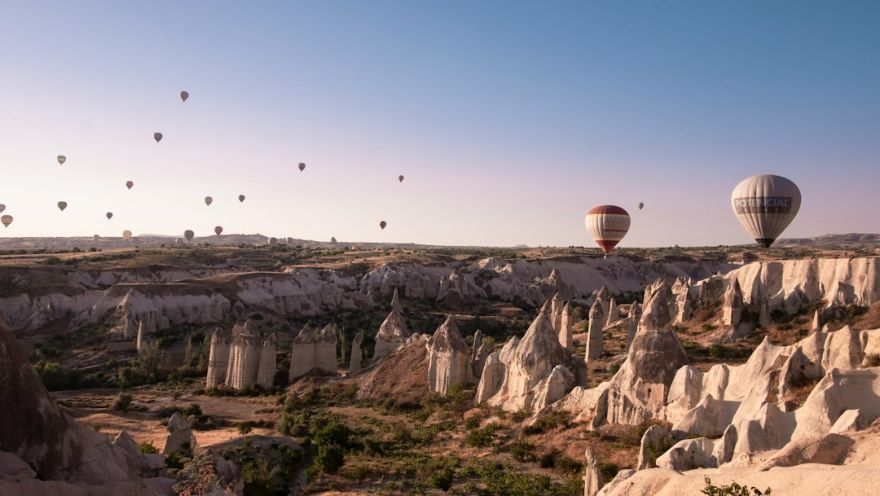Nestled in the heart of Turkey, Cappadocia is a captivating region known for its otherworldly landscapes and rich history. With its unique geological formations and ancient cave dwellings, it comes as no surprise that Cappadocia has served as a muse for many writers and filmmakers. From classic works of literature to contemporary films, this extraordinary destination has inspired countless creative minds. In this article, we will explore how Cappadocia has become a source of inspiration in both literature and film.
Captivating Landscapes: The Perfect Setting
Cappadocia’s surreal landscapes, characterized by towering fairy chimneys and rocky formations, provide a visually stunning backdrop for storytelling. These captivating vistas have often been used to transport readers and viewers to magical realms, where anything is possible. Authors and filmmakers alike have found inspiration in the ethereal beauty of Cappadocia, weaving it seamlessly into their narratives.
Literary Inspirations: From Travelogues to Fiction
Cappadocia has not only captured the hearts of travelers but has also found its way into the pages of literature. From travelogues documenting the region’s unique charm to works of fiction set in Cappadocia, writers have been drawn to its mystical allure.
One notable example is Amin Maalouf’s novel, “Samarkand,” which tells the story of Omar Khayyam, the famous Persian mathematician, astronomer, and poet. In the book, Cappadocia serves as a place of refuge for the protagonist, offering solace and inspiration as he navigates the complexities of life.
Another literary work that showcases Cappadocia’s enchantment is Orhan Pamuk’s “The Museum of Innocence.” The novel tells the story of a man’s obsessive love and the objects he collects to immortalize his memories. Cappadocia becomes a symbol of timeless beauty and a place where the protagonist escapes the constraints of society.
Filmic Inspirations: A Cinematic Wonderland
Cappadocia’s otherworldly landscapes have also provided a stunning backdrop for films, captivating audiences with its unique charm. Directors have utilized the region’s surreal beauty to create visually striking scenes, adding an extra layer of magic to their storytelling.
One such film is Nuri Bilge Ceylan’s “Winter Sleep,” which won the Palme d’Or at the 2014 Cannes Film Festival. The movie explores the complexities of human relationships and features Cappadocia’s mesmerizing landscapes as a metaphorical representation of isolation and introspection.
In addition to its use in contemporary cinema, Cappadocia has also found its way into classic films such as “Star Wars: Episode IV – A New Hope.” The distinctive rock formations of Cappadocia served as the backdrop for the planet Tatooine, transporting audiences to a galaxy far, far away.
The Spirituality of Cappadocia: A Source of Inspiration
Beyond its physical beauty, Cappadocia is also renowned for its spiritual significance. The region is home to numerous rock-cut churches and monasteries, hewn into the soft volcanic rock. This rich religious heritage has inspired not only works of art and architecture but also literary and cinematic masterpieces.
One example is Paulo Coelho’s best-selling novel, “The Valkyries,” which explores the author’s own spiritual journey through the region. Cappadocia’s mystical atmosphere and ancient traditions serve as a catalyst for the protagonist’s personal transformation, highlighting the transformative power of the region.
Cappadocia’s spiritual allure has also been captured on film, such as in the documentary “The Land of the Peristyle Churches.” The film delves into the history and preservation of the rock-cut churches, shedding light on the region’s religious significance and inspiring viewers to explore the depths of their spirituality.
Conclusion: Cappadocia’s Enduring Legacy
Cappadocia’s unique landscapes, rich history, and spiritual significance have made it a timeless source of inspiration for writers and filmmakers alike. From classic works of literature to contemporary films, this extraordinary region continues to captivate audiences with its ethereal beauty. Whether it is through the pages of a book or the silver screen, Cappadocia’s enduring legacy as a muse will undoubtedly inspire generations to come.





